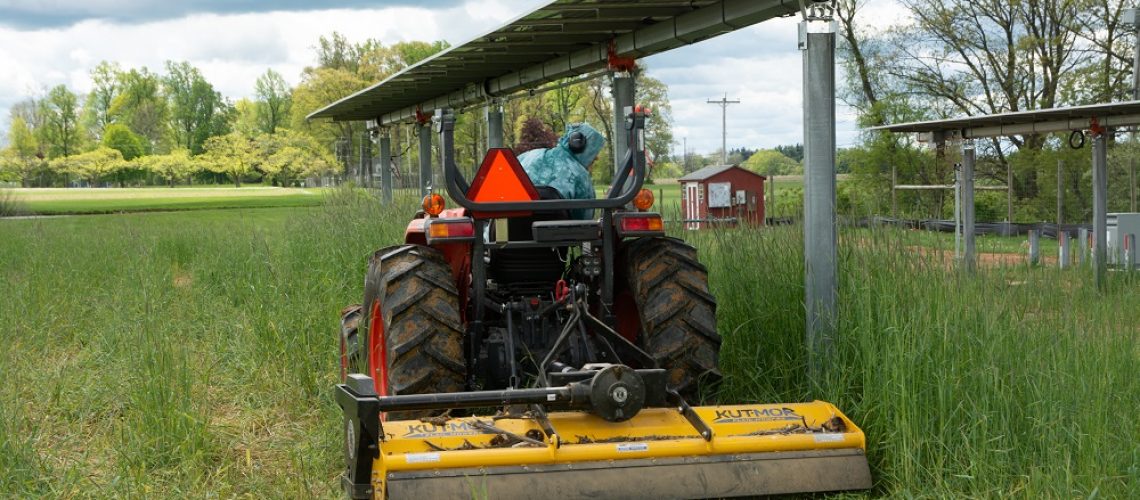A dual-use solar and agricultural site in New York will add 2 MW of solar capacity while retaining active market crop production.
Dual-use solar and agricultural projects, sometimes called AgriPV, AgPV, or agrivoltaics, is the practice of growing crops or raising livestock on the same land as a solar energy facility. The practice has been shown to cause mutual co-benefits for both the crops and animals and the output of the solar array.
The latest of such projects comes from Lightstar Renewables, which is developing the Old Meyers solar project in Poughkeepsie, New York. The project commenced construction this fall and is expected to reach commercial operations by Summer 2024.
The project, located in Wappingers Falls area, includes a 2 MW community solar array that facilitates the land’s proprietors, the Thompson’s family, to continue agricultural activities. The project will offer the Thompson family a stable source of land lease income for 25 years. Lightstar has been engaged with the farm owners since early 2022 to help rezone the property at no cost to the farmers.
Lightstar’s community solar project will generate clean, local energy that home and business accounts can subscribe to a pay for portion of the electricity generated. This generation is then used as a credit to offset utility bills.
“What many don’t realize is that solar and agriculture are perfect partners — their synergies are crucial to the security and resiliency of our community for green power as well as localized food sources,” said Paul Wheeler, chief executive officer and founder of Lightstar.
The AgriPV project will mount the panels with enough height to adequately allow for farming activities beneath. Once completed, the array will provide protection to crops from extreme weather events like storms, early and late frosts, and heat waves.
Underneath the array, a variety of strawberries, tomatoes, peppers, lavender and other produce will be grown. Lightstar said it will work with local institutions to study the growing process and document the financial and agricultural case studies for wide dissemination.
“This project is a fantastic opportunity for our family farm to increase our capacity to produce a variety of healthy locally grown crops and at the same time demonstrate the viability and effectiveness of the dual-use solar concept,” said Sean Thompson, landowner and farmer.
“An added bonus is that this project will increase the vitality of our farm! The crops we produce under the array will be sold directly to consumers as well as through local channels and will fill a food niche that is otherwise only satisfied by producers outside of our region,” said Thompson.



